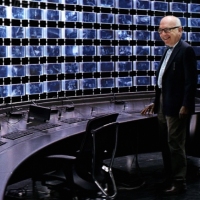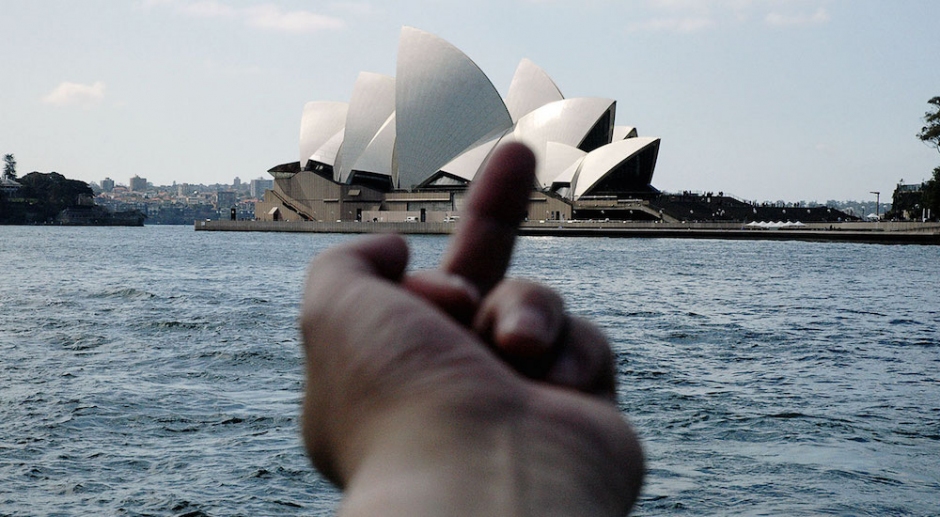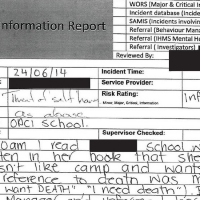 The government has nine months to think of a valid reason to keep retaining your metadataA revision of Australia's data retention laws, 15 months in.
The government has nine months to think of a valid reason to keep retaining your metadataA revision of Australia's data retention laws, 15 months in.

Art in the time of Social Media
A look at how art has changed in the age of digitalisation.
Words by Monique Myintoo. Header image from Ai Weiwei's Study Of Perpsective series.
Over on image sharing platform Instagram, a handful of deep red cherries lay at the center of a soundless creative universe. Ripe for open interpretation, there’s an understated suggestion that lurks between each softened curve: no matter how imbricated you become in your craft, art can only be validated by who you know and the online number in which it collects. While traditional fine art history would dictate these conversations with preciousness and pain, ideologically, it was in these worlds that an unbreakable wall was built – it protected the whitewash of the past that had produced it.
Exacting self-promotion and publicity, Instagram gives a way for artists to directly inject their work into the competitive market without the middleman. While most established artists use social media to project their current works in progress or inspirations, there’s a tangibility that comes from the innate patterns of a connected generation. In 2011, Ai Weiwei was subjected to an 81-day detaining by Chinese authorities; his passport confiscated, his rights denied for foreign travel. As details of his imprisonment and torment emerged, Weiwei did not release any official press but instead, announced his return with a photo of himself and new passport to his hundreds of thousands of followers. Covered by the likes of BBC, The New York Times and CNN, it was a reflection of how Instagram could project a new wave of liberation and humanist beliefs; Weiwei treating the time and distance of his experience as the launching pad for his rapid sensory installations, crowdfunded constructions and political counterarguments. While Weiwei is an extreme and inimitable example, initiatives of similar rituals within the art market are constantly shifting and adapting to the possibilities of all things digital.
Although the concept of digitisation is nothing new, more and more artists are realising that the digital realm itself is more than a media-rich landscape, but an institution that can help accomplish their aims. With digitisation allowing a broader public viewing of pieces and archival collections – works that are not traditionally available for public display due to fragility, costs or space – online galleries like Instagram usher in new ways to champion works and connect users to the artists. Being a part of the new generation of viewers who disintegrate traditional art boundaries in a click, I often found myself questioning if art can exist on social media, directing these thoughts moreover to the Australian creative scene. Empowered by a kind of curiousness that wanted to define how social media performance impacts an artist’s identity, I was suddenly stumbling over detailed Google trends and memoirs of photo-sharing obsessions, reading works on the power of mixed media and revising my studies in ontology and network literacy. In a blunt change of gears, this obsession was often the precursor for many contrasting opinions; each concerned over today’s nonstop visual culture that’s accessible all day, every day.
Understanding an artist’s place in this continuous stream of images, I was accidentally drawn to John Berger’s Ways Of Seeing. A 1972 BBC series that highlights dichotomies of art interpretation, the documentary distributes Berge’s concepts in an attempt to demystify the power of a painting and it’s subject beyond the artist. Like a prelude of how artists today use Instagram in attempt to challenge fine art histories and question those practices, Berger’s words can be seen to comment on the infrastructure of social media in ominous hindsight, noting:
“The means of reproduction are used politically and commercially to disguise or deny what their existence makes possible. But sometimes individuals use them differently. Adults and children sometimes have boards in their bedrooms or living rooms on which they pin pieces of paper: letters, snapshots, reproductions of paintings, newspaper cuttings, original drawings, postcards. On each board all the images belong to the same language and all are more or less equal within it, because they have been chosen in a highly personal way to match and express the experience of the room’s inhabitant. Logically, these boards should replace museums.”
Although Instagram doesn’t chomp down on images like Tumblr or Pinterest, it’s in the rise of these image-sharing platforms that the bedroom artist finds new authority and power to command. Unashamed and often tech-enthusiastic, artists suddenly raise a problematic position of ambivalence – how does one react if their work goes viral online? And does this success mean strangers will come to my art show?
While digitalisation is a way of presenting what was once untouched, if an artist is so easily accessible – their works inundated with hyperlinks; their own works in progress, viral – there’s a quiet dialogue on what’s left for the tangible. The tricky thing is, most artists who share their work online aren’t merely opting into this postmodern art game for amusement, but to strategically network their creations by common themes of relationships, identities and beliefs. By bending these truths and realities by the press of their fingers, artists feel in control – and indeed, they are more than ever before. Nonetheless, while Instagram can give opportunity as a safe space for those to explore and exercise self-expression, there’s a darkness lurking – existing in the power structures of popularity and algorithms that are played out again and again with every new upload.
With social media and technology slowly collating their commercial logic and tailoring it to a user-experience, there’s a sudden divide between supporting artists and the reproduction of this support through likes, reblogs and shares. Overwhelmed in a constant output of images, an artist’s life and their work could be insinuated as never truly separated, but rather, a stream of which is simply the same. Living life through images, this is not in my eyes a negative or a restriction, but simply an observation: the relationship between art and life is becoming harder to read than ever before. And of course, if image-sharing can be viewed as a way of squaring these art world circles, then Instagram should be met with criticism to question the inanity of how technology collects.
 The government has nine months to think of a valid reason to keep retaining your metadataA revision of Australia's data retention laws, 15 months in.
The government has nine months to think of a valid reason to keep retaining your metadataA revision of Australia's data retention laws, 15 months in.
 My Island HomeWe did this. We are responsible. Now what the hell are we going to do about it?
My Island HomeWe did this. We are responsible. Now what the hell are we going to do about it?